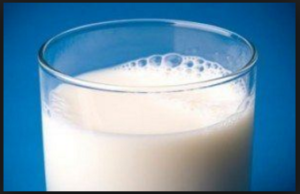Hello Nutrition Nation! Please forgive me for the lack of posts the past few weeks- It’s been hectic! Not to worry, I’ve got some exciting content for this post, so let’s get right to it.

So I’m assuming you’ve all heard of Calcium, ya know, that stuff that’s in milk and yogurt. Well, there is definitely a lot more to know about this awesome mineral which really can benefit you down the road. To start with, Calcium is the most abundant mineral in the human body. It makes up as much as 2% of a person’s overall body weight, which is pretty incredible when you think about it. That means that a person who weighs 150 lbs has three pounds of calcium in their body! Cool stuff. It’s important to know that 99% of the Calcium in your body is found in the bones and teeth; it’s needed to maintain their structural integrity. The other 1% is found inside and outside of other body cells, and is used for a variety of different activities that I’ll get into later (Gropper & Smith 425-427).
In terms of sources of Calcium, it’s common knowledge that dairy foods are the gold standard. Things like milk, cheese, and yogurt contain the highest amounts of Calcium. But don’t forget that vegetables like broccoli, cauliflower and kale are also high in Calcium. So if you needed another reason to eat your vegetables, there’s one. You can get Calcium from various supplements like Calcium Carbonate or Calcium Citrate, but these supplements often produce undesirable side effects like gas and bloating, so try and stick to food sources.
One important thing about Calcium, is that it’s absorption into the body is tied closely with Vitamin D. This is a very complicated relationship, but to sum it up, Vitamin D stimulates the body to absorb more Calcium. So, if you aren’t getting enough Vitamin D, it’s very possible that you could become Calcium deficient. Did you ever wonder why milk is often fortified with Vitamin D? There’s your answer. This is just one way that the nutrients in our body work together to produce an overall healthier you.
Besides being a crucial component of teeth and bones, Calcium has many other important roles in the body. Examples of these roles are nerve transmission, muscle contraction, and blood clot formation. To go into a bit of detail about muscle contraction, Calcium is needed in high concentration in your muscle cells to contract every type of muscle in your body. That’s right bros, it’s not just about protein (Gropper & Smith 433).
Many people have a perception that diary isn’t something that should be a component of a healthy diet. But, like I said, dairy is where we get most of our dietary Calcium, and so eliminating it can make it very difficult to get the amount that we need. This is because vegetable sources, for example, have to be eaten in much greater quantities to get the same amount. So if you don’t like dairy, stock up on the broccoli man, because you’ll need it.
If you do become Calcium deficient, a few not so good things happen in the body. The main issue is that when you’re Calcium deficient, the parathyroid gland (maybe you’ve heard of it) releases Parathyroid Hormone (PTH). PTH tells the body to take Calcium out of your bones, so that it can be used by the rest of the body. You can think of the bones as your body’s Calcium savings account- one that you don’t want to take money out of. Prolonged Calcium deficiency can lead to increased risk of developing osteoporosis, but it is also associated with high blood pressure and type two diabetes.
In terms of how much Calcium you should be consuming per day, like most nutrients, the amount varies based on things like age, gender, and pregnancy. It is recommended that men aged 19-70 and women aged 19-50 consume 1,000mg/day, with the amount increasing to 1,200mg/day for men over 70 and women over 50. It’s important to note that women who are pregnant or lactating need even higher amounts, up to 1,300mg/day if under the age of 18 (Gropper & Smith 435-436).
So there you have it, a brief overview of Calcium and some of it’s critical roles in the body. Now go have yourself some cheese or something. Maybe they should call it Calciyum!
References:
Gropper, S. A., Smith, J. L., & Groff, J. L. (2009). Advanced nutrition and human metabolism. Australia: Wadsworth/Cengage Learning.
